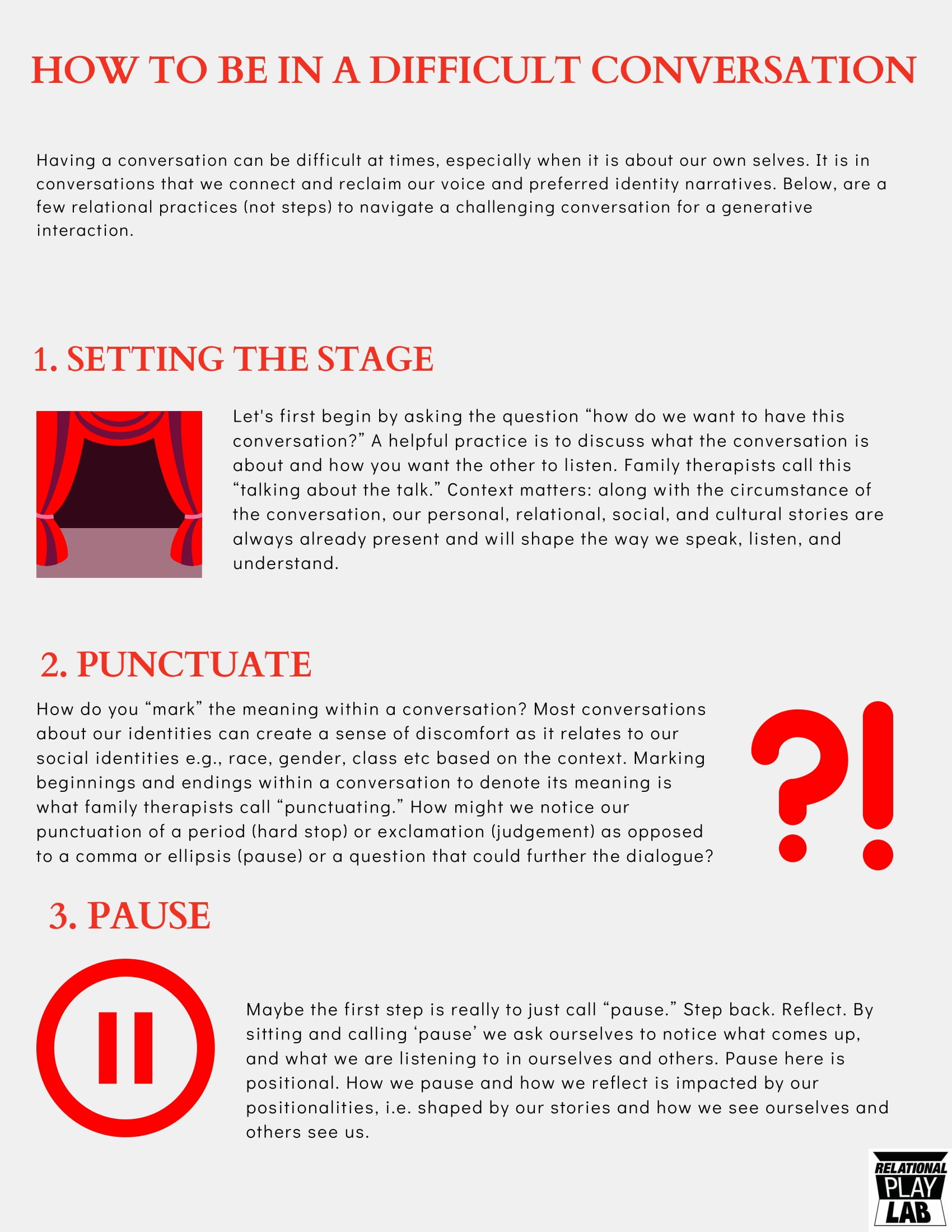Having a conversation can be difficult at times, especially when it is about our own selves. Or if it is about things that are socially sensitive or tense. For that matter, any conversation that makes us feel uncomfortable or vulnerable could be called a difficult conversation. Such conversations can either silence us or we might choose to be silent to protect ourselves from the unknown or the discomfort.
And, yet it is in conversations that we connect and reclaim our voice and preferred identity narratives. Below, are six conversational practices (not steps) to navigate a challenging conversation for a generative interaction. (Download a free pdf to use with your teams and partners)
Setting the Stage
Let’s first begin by asking the question “how do we want to have this conversation?” A helpful practice is to discuss what the conversation is about and how you want the other to listen. Family therapists call this “talking about the talk.” Context matters: along with the circumstance of the conversation, our personal, relational, social, and cultural stories are always already present and will shape the way we speak, listen, and understand.
Punctuate
How do you “mark” the meaning within a conversation? Most conversations about our identities can create a sense of discomfort as it relates to our social identities e.g., race, gender, class etc based on the context. Marking beginnings and endings within a conversation to denote its meaning is what family therapists call “punctuating.” How might we notice our punctuation of a period (hard stop) or exclamation (judgment) as opposed to a comma or ellipsis (pause) or a question that could further the dialogue?
Pause
Maybe the first step is really to just call “pause.” Step back. Reflect. By sitting and calling ‘pause’ we ask ourselves to notice what comes up, and what we are listening to in ourselves and others. Pause here is positional. How we pause and how we reflect is impacted by our positionalities, i.e. shaped by our stories and how we see ourselves and others see us.
Check-in
How might we be mindful of our intent, tone, and impact? Notice how we are speaking with others and with what result. Ask oneself: where am I coming from? Why do I believe this? What aspect of someone’s experiences, stories, or context am I ignoring? What am I driving towards? How do I want to co-create with them?
Jump-in
These are complex conversations with many contradictions. We will make mistakes. Allow for contradictions to live in the conversations as a way of engaging with multiple voices. Jumping-back in the conversation takes courage and commitment to stay in the dialogue. This does not mean discomfort goes away, rather we build our stamina to be with the discomfort as we grapple.
Grapple
By grappling with conversations that are complex, we are able to create space for a person’s voice that has been silenced, overridden, or sidelined by the dominant narratives in our society. These are future forming conversations. We have not been here in this way leaning into the discomfort, thus we need to grapple and lean on each other.
Share how you create conversations where people feel they belong or feel seen and heard? Tell us if you find this pdf helpful and how you used it!

 Download pdf
Download pdf

